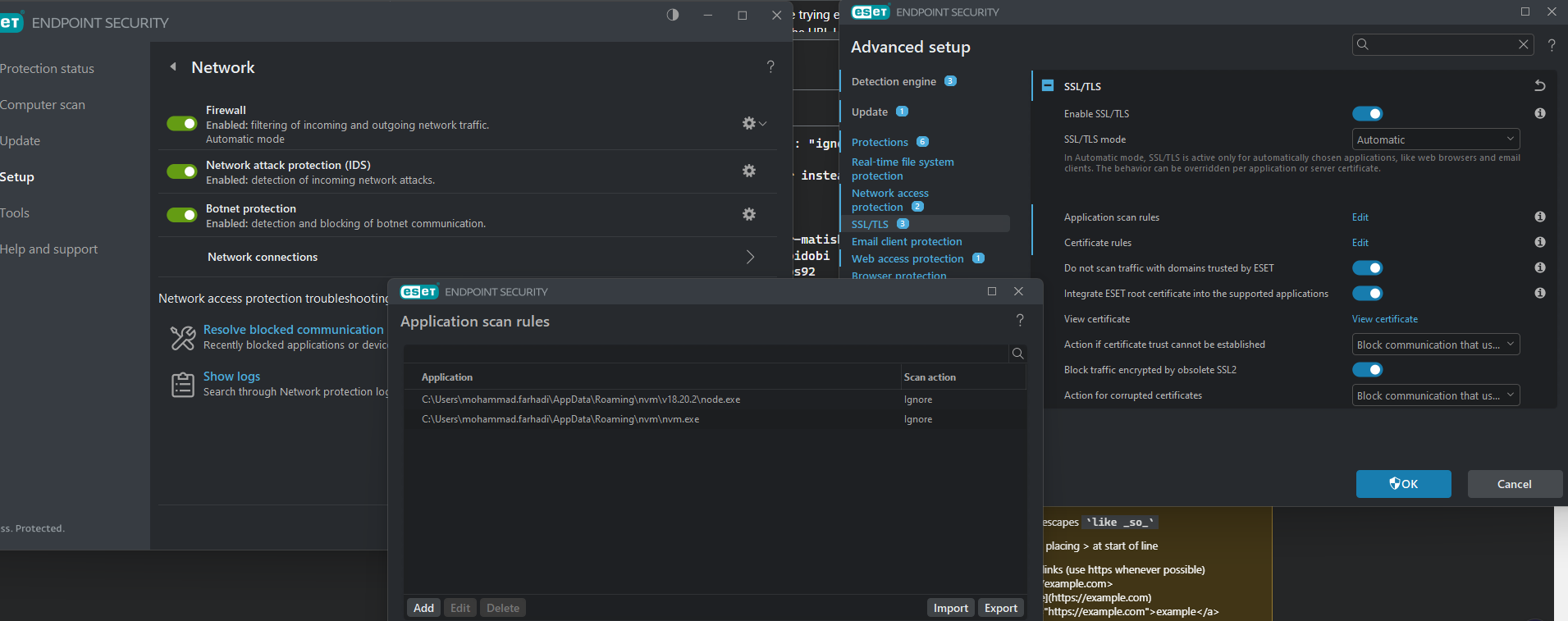This error has suddenly started occurring on all my servers, and despite trying everything suggested here, I haven't been able to resolve it. The issue persists regardless of the URL I attempt to access, including 'google.com', for instance. My environment consists of Windows Server 2019 and Node.js version 21.7.3. I've attempted making requests using both Axios and Node-fetch, but encountered the same error with both. Surprisingly, when using 'CURL', everything functions as expected. Below is an example of the code I've been working with.
const axios = require('axios');
axios.get('https://google.com')
.then(function (response) {
console.log(response);
})
.catch(function (error) {
console.log(error);
});

